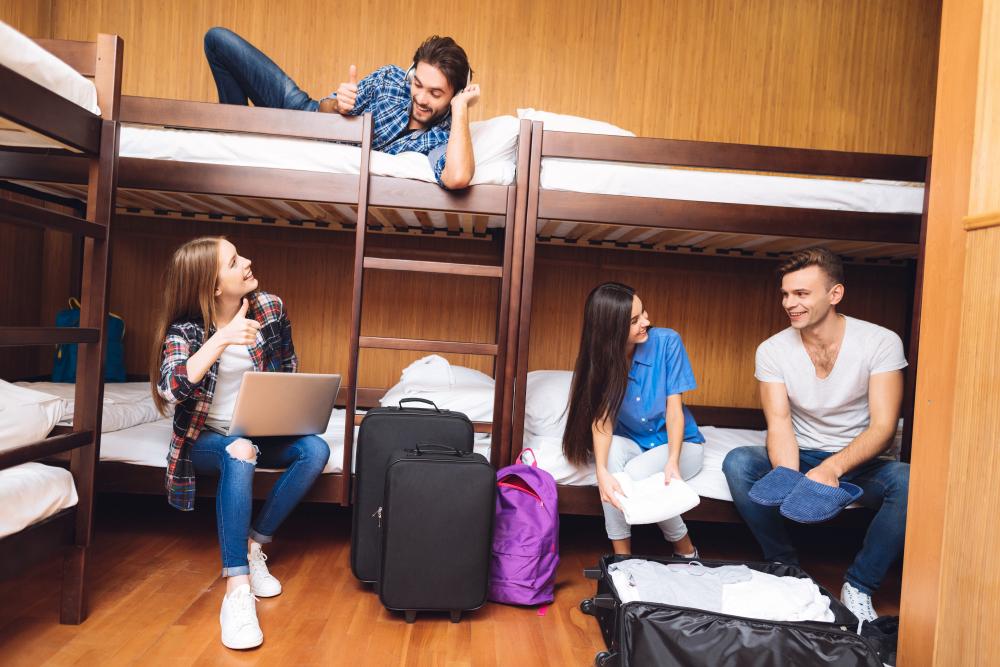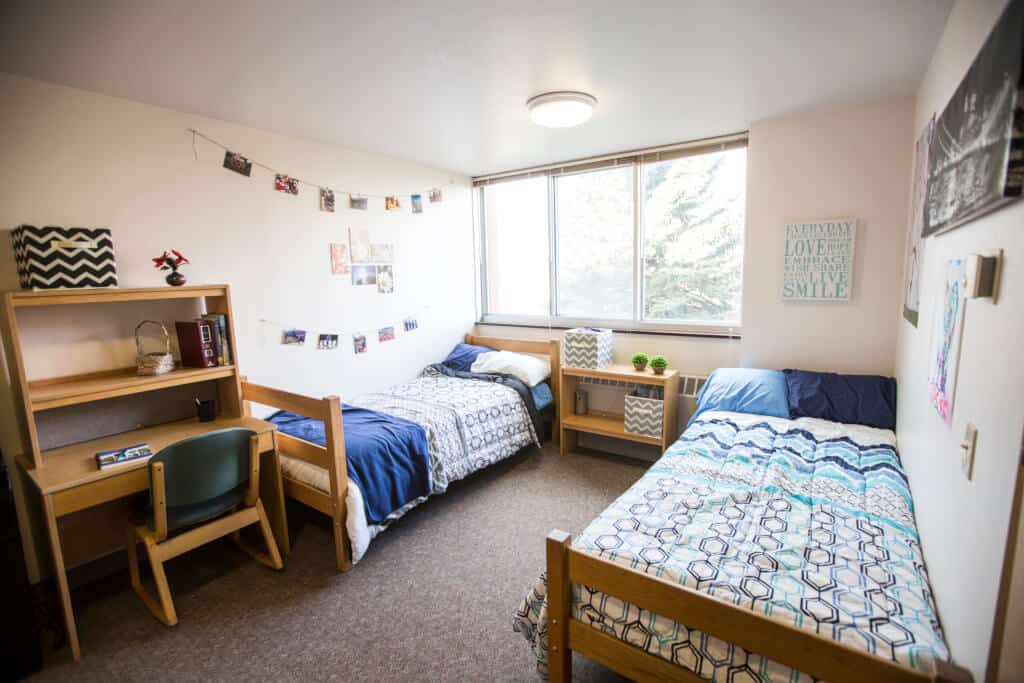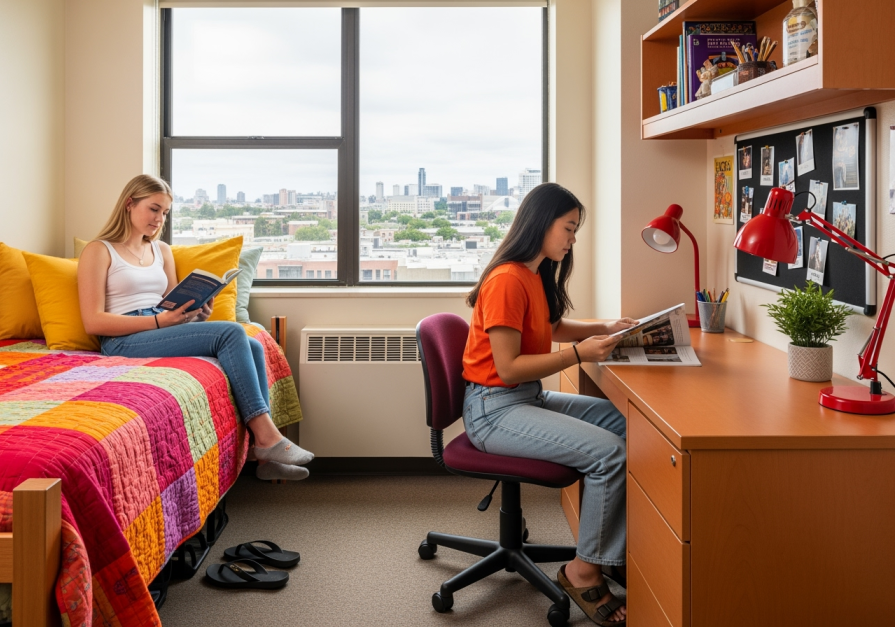Best Types of Accommodation for International Students: A Complete 2026 Guide
Studying abroad is one of the most exciting experiences a student can have. New cultures, new cities, and new academic challenges await. However, one of the most critical decisions for international students is choosing the right accommodation. Where you live can significantly impact your academic success, social life, and overall well-being.
With so many options available, from university dorms to private apartments, it can be overwhelming to decide what suits your needs best. In 2026, the choice of accommodation is influenced by budget, location, lifestyle preferences, and even health and safety considerations. This guide explores the best types of accommodation for international students, highlighting pros, cons, costs, and practical tips for making the right choice.

Why Choosing the Right Accommodation Matters
Your living arrangement affects several aspects of your student life:
- Academic Performance – A quiet, well-equipped study space supports better learning.
- Social Integration – Accommodation type can determine how easily you make friends and network.
- Budget Management – Living costs can be one of the largest expenses when studying abroad.
- Safety and Comfort – Ensuring you feel secure and comfortable is essential for mental well-being.
Pro Tip: Think of accommodation as an investment in your overall student experience—not just a place to sleep.
Step 1: Determine Your Priorities
Before exploring accommodation options, ask yourself these questions:
- What is my budget?
- How close do I want to be to my university or public transport?
- Do I prefer a quiet environment or a lively social atmosphere?
- Will I need self-catering facilities, or do I prefer a meal plan?
- How important is privacy versus community living?
Answering these questions will help narrow down your options and make the selection process easier.
Step 2: Explore the Best Accommodation Options
Here are the most common types of accommodation for international students in 2026, along with their advantages, disadvantages, and approximate costs.
1. University Dormitories (On-Campus Halls of Residence)
Overview:
University dorms are traditional student housing located within or near the campus. They may be shared or single rooms and often include communal facilities such as kitchens, lounges, and laundry areas.
Pros:
- Close to classes and campus resources.
- Built-in social environment—easy to make friends.
- Some include meal plans.
- Managed by the university, so maintenance and safety are reliable.
Cons:
- Can be noisy or crowded.
- Limited privacy.
- Less flexibility in choosing roommates.
Costs (2026 Estimates):
- $400–$1,000 per month depending on location and meal plan.
Best For:
Students who want to immerse themselves in campus life and enjoy a social atmosphere.
2. Private Student Residences
Overview:
Privately-owned student housing near universities is increasingly popular. These can be studio apartments, shared flats, or purpose-built student accommodation (PBSA).
Pros:
- More privacy than university dorms.
- Modern amenities such as gyms, study rooms, and security systems.
- Flexible lease terms.
- Often includes internet and utilities in rent.
Cons:
- More expensive than on-campus housing.
- Social atmosphere may be less integrated than dorms.
- Lease terms may be less flexible if your course ends early.
Costs (2026 Estimates):
- $600–$1,500 per month depending on city and facilities.
Best For:
Students seeking independence, safety, and modern facilities while staying close to campus.
3. Homestays with Local Families
Overview:
Living with a local family can provide cultural immersion and a home-like environment. Homestays often include meals and shared common spaces.
Pros:
- Cultural and language immersion.
- Meals and laundry often included.
- Supportive environment for first-time international students.
Cons:
- Less independence.
- Possible cultural or lifestyle differences.
- Fixed house rules may limit flexibility.
Costs (2026 Estimates):
- $500–$1,200 per month, often including meals.
Best For:
New international students who want cultural integration and a structured environment.
4. Shared Apartments or Houses (Off-Campus)
Overview:
Students rent apartments or houses together, sharing common areas and splitting rent and bills.
Pros:
- Cost-effective if shared with roommates.
- Offers independence and privacy in your own bedroom.
- Opportunity to choose location and roommates.
Cons:
- Responsibility for utilities and maintenance.
- Can be less social if roommates are not friendly.
- Lease agreements can be complex.
Costs (2026 Estimates):
- $300–$800 per month for shared apartments, depending on location.
Best For:
Students comfortable with independent living who want to manage their own lifestyle and budget.
5. Studio Apartments
Overview:
Self-contained apartments with bedroom, bathroom, and kitchen. These are ideal for students who prefer complete privacy.
Pros:
- Full privacy and control over your living space.
- Ideal for mature students or those with demanding study schedules.
- No shared responsibilities.
Cons:
- Expensive compared to shared housing.
- May feel isolated if far from student communities.
- All bills and maintenance responsibilities fall on you.
Costs (2026 Estimates):
- $700–$1,500 per month, depending on city and facilities.
Best For:
Students valuing privacy, focus, and flexibility in lifestyle.

6. Short-Term Rentals or Hostels
Overview:
For students arriving early, doing internships, or waiting for permanent housing, hostels or short-term rentals are viable options.
Pros:
- Flexible, often no long-term commitment.
- Good for short stays or trial periods before choosing permanent accommodation.
Cons:
- Limited privacy and amenities.
- Can be noisy or less safe for long-term living.
- Higher cost per month for short-term arrangements.
Costs (2026 Estimates):
- $400–$1,200 per month for short-term rentals, depending on city and quality.
Best For:
Students needing temporary accommodation while searching for long-term housing.
Step 3: Consider Location and Accessibility
When choosing accommodation, location is as important as type:
- Proximity to Campus – Saves commuting time and costs.
- Public Transportation – Access to buses, subways, or bike paths.
- Nearby Amenities – Grocery stores, gyms, hospitals, and social spaces.
- Safety and Neighborhood – Research crime rates and student-friendly areas.
Pro Tip: In 2026, many cities offer apps and websites where students can explore neighborhood ratings, transportation links, and estimated living costs.
Step 4: Budgeting for Accommodation
Accommodation is one of the largest expenses for international students. Here’s how to budget:
- Set a monthly limit based on tuition, living costs, and personal spending.
- Include utilities and internet if not included in rent.
- Consider meal plans if cooking facilities are limited.
- Factor in deposit and agency fees for private rentals.
Rule of Thumb: Accommodation should ideally not exceed 30–40% of your total student budget.
Step 5: Safety and Legal Considerations
- Check lease agreements carefully, especially for private rentals.
- Confirm the legal status of the landlord or housing provider.
- Verify safety features like smoke detectors, fire exits, and secure locks.
- Understand local tenant rights to avoid disputes.
Pro Tip: Universities often have a housing office that verifies listings and provides legal guidance.
Step 6: Tips for a Smooth Move-In
- Book Early – The best housing options fill up quickly, especially in popular student cities.
- Visit the Property – If possible, inspect the accommodation before signing a lease.
- Prepare Essential Documents – Passport, visa, proof of enrollment, and references.
- Pack Smart – Consider what furniture or appliances are included and what you’ll need to bring.
- Connect with Roommates Early – Setting expectations before moving in reduces conflicts.
Step 7: Adapting to Your New Living Environment
Once you’ve moved in:
- Get to know your neighbors or roommates.
- Familiarize yourself with local amenities and transport.
- Establish routines for cooking, cleaning, and study time.
- Engage in social or cultural activities to avoid isolation.
Pro Tip: Living abroad is not just about accommodation—it’s about creating a supportive environment for academic and personal growth.

Final Recommendations
- University Dorms: Best for first-year students wanting social immersion.
- Private Residences: Ideal for independent students seeking modern amenities.
- Homestays: Perfect for cultural immersion and language practice.
- Shared Apartments: Cost-effective with moderate privacy.
- Studio Apartments: High privacy, suitable for mature or focused students.
- Short-Term Rentals: Useful for temporary or transitional housing.
Bottom Line: Your choice depends on budget, privacy preferences, social needs, and lifestyle goals. Start early, research thoroughly, and balance comfort with cost to maximize your study abroad experience.
Conclusion
Choosing the best type of accommodation for international students in 2026 requires careful planning, research, and consideration of your academic and personal priorities. A well-chosen living arrangement enhances your learning, helps you make friends, and ensures a safe, enjoyable experience abroad.
Whether you prefer the bustling social life of a university dorm, the independence of a private apartment, or the cultural immersion of a homestay, there is an option to suit every student. By understanding the pros, cons, and costs of each type, and considering location, safety, and budget, you can make an informed decision that supports your academic success and personal growth.